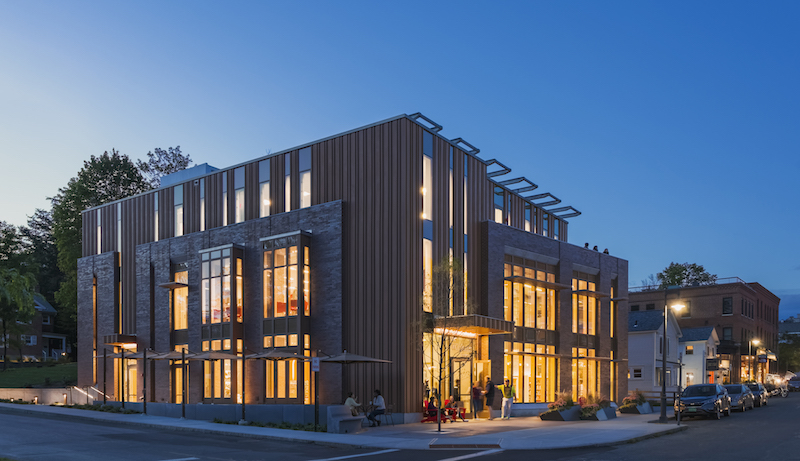The new Williams College campus bookstore includes everything you’d expect in a college bookstore plus a coffee shop, a dedicated area that can be sanctioned off for events and special talks, indoor/outdoor leisure spaces for the community, and a sustainable design that earned LEED Platinum designation.
The CambridgeSeven-designed building used local materials such as granite and bricks for the building’s exterior. A glazing to wall ratio of 24%, insulated glass with integral wood louvers, and an exterior brise soleil for enhanced thermal protection help the building achieve an Energy Use Intensity (EUI) rating of 39. The thicker than average, tightly sealed, insulated walls also help the bookstore achieve the EUI that is 41% better than baseline.
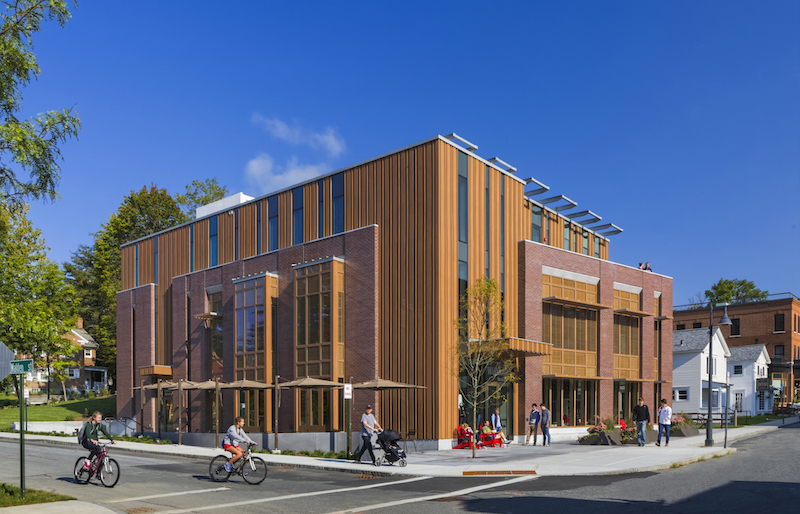 Courtesy Williams College.
Courtesy Williams College.
A stormwater management system helps keep stormwater runoff equal to the pre-development levels. This system includes a rain garden, deep sump catch basins, and underground detention to capture stormwater from roofs and new paving before it runs off the site.
See Also: Best in library design 2018: Six projects earn AIA/ALA library awards
The building does not use any gas, only electricity. As such, the PV array on the roof was designed to form a dynamic part of the building’s presence on Spring Street.
Other features include birch plywood ceilings and fabric paneled hidden doors to section off the café space for programming. In addition to the building design, CambridgeSeven also designed the building’s furniture and finishes.
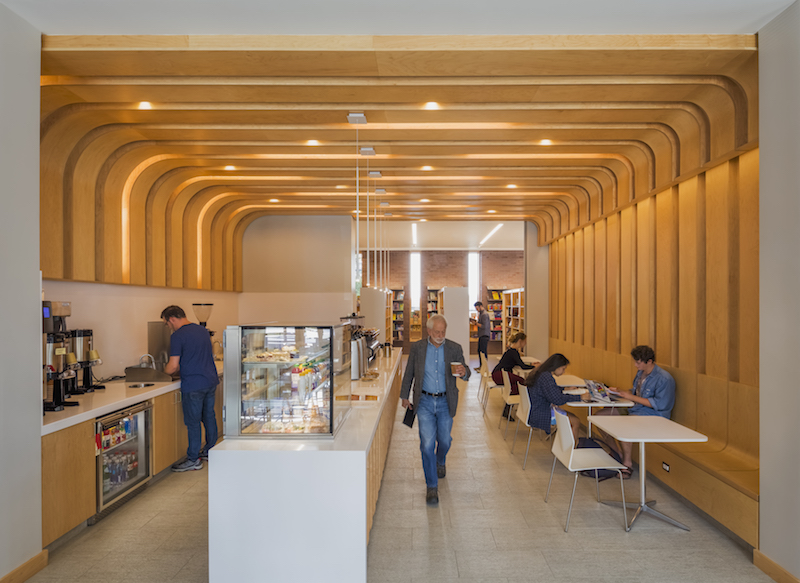 Courtesy Williams College.
Courtesy Williams College.
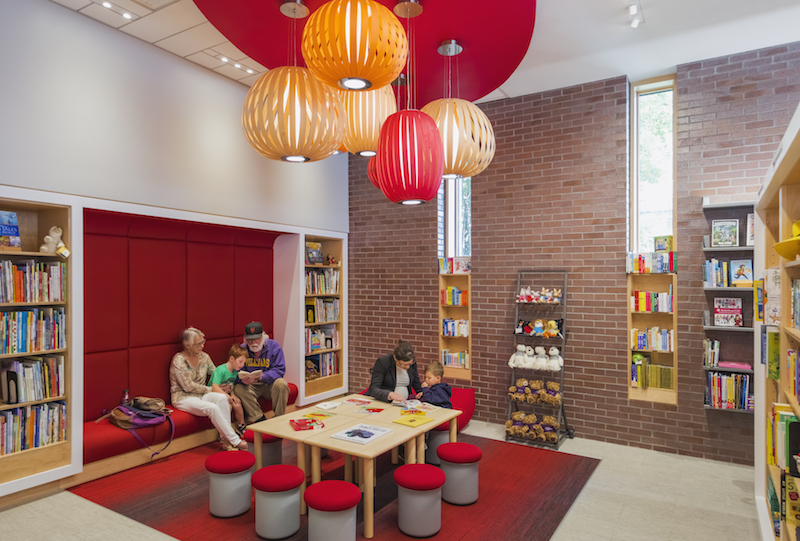 Courtesy Williams College.
Courtesy Williams College.
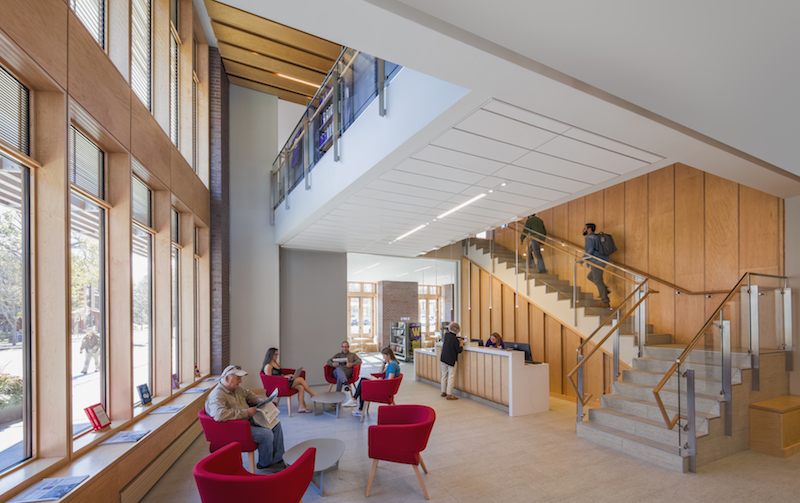 Courtesy Williams College.
Courtesy Williams College.
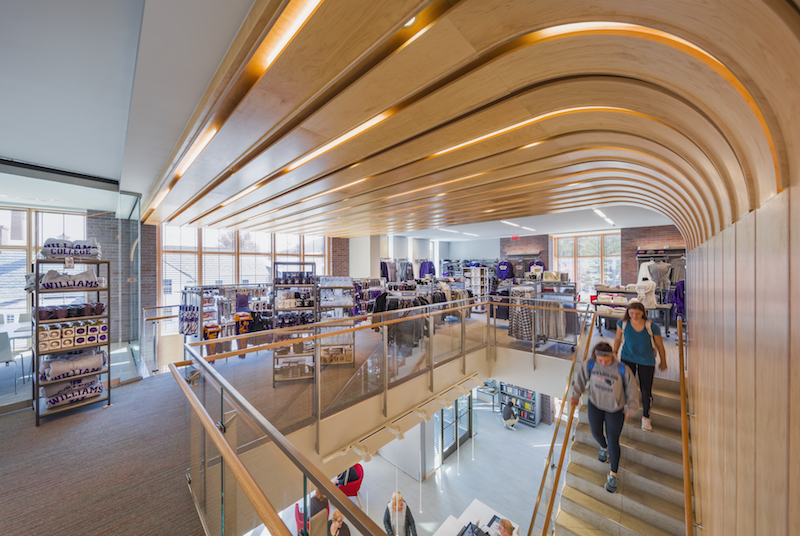 Courtesy Williams College.
Courtesy Williams College.
 Courtesy Williams College.
Courtesy Williams College.
 Courtesy Williams College.
Courtesy Williams College.
Related Stories
| Oct 17, 2011
Clery Act report reveals community colleges lacking integrated mass notification systems
“Detailed Analysis of U.S. College and University Annual Clery Act Reports” study now available.
| Oct 14, 2011
University of New Mexico Science & Math Learning Center attains LEED for Schools Gold
Van H. Gilbert architects enhances sustainability credentials.
| Oct 12, 2011
Bulley & Andrews celebrates 120 years of construction
The family-owned and operated general contractor attributes this significant milestone to the strong foundation built decades ago on honesty, integrity, and service in construction.
| Sep 30, 2011
Design your own floor program
Program allows users to choose from a variety of flooring and line accent colors to create unique floor designs to complement any athletic facility.
| Sep 23, 2011
Okanagan College sets sights on Living Buildings Challenge
The Living Building Challenge requires projects to meet a stringent list of qualifications, including net-zero energy and water consumption, and address critical environmental, social and economic factors.
| Sep 14, 2011
Research shows large gap in safety focus
82% of public, private and 2-year specialized colleges and universities believe they are not very effective at managing safe and secure openings or identities.
| Sep 7, 2011
KSS Architects wins AIA NJ design award
The project was one of three to win the award in the category of Architectural/Non-Residential.
| May 18, 2011
Major Trends in University Residence Halls
They’re not ‘dorms’ anymore. Today’s collegiate housing facilities are lively, state-of-the-art, and green—and a growing sector for Building Teams to explore.
| May 18, 2011
Raphael Viñoly’s serpentine-shaped building snakes up San Francisco hillside
The hillside location for the Ray and Dagmar Dolby Regeneration Medicine building at the University of California, San Francisco, presented a challenge to the Building Team of Raphael Viñoly, SmithGroup, DPR Construction, and Forell/Elsesser Engineers. The 660-foot-long serpentine-shaped building sits on a structural framework 40 to 70 feet off the ground to accommodate the hillside’s steep 60-degree slope.


